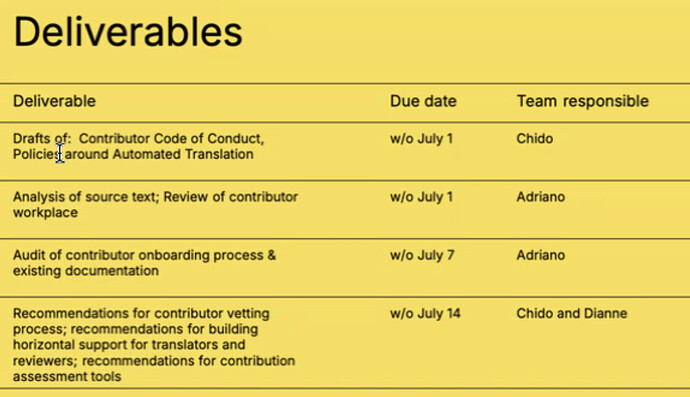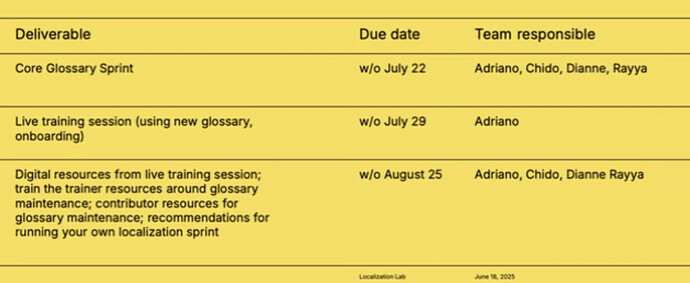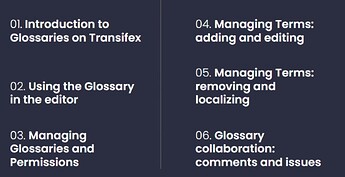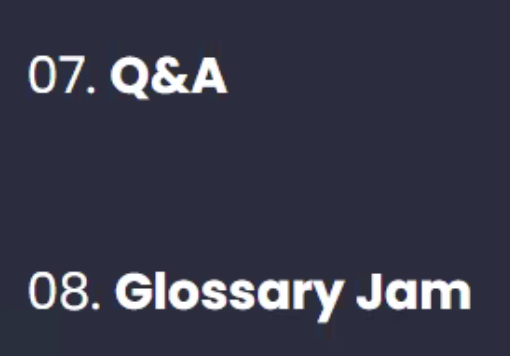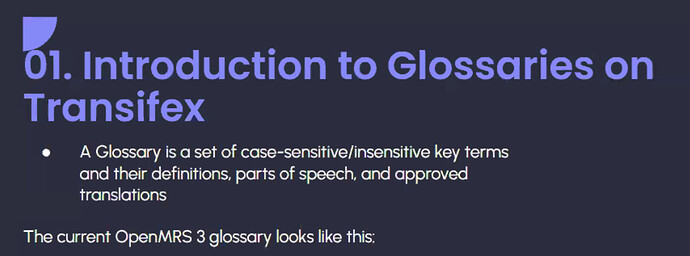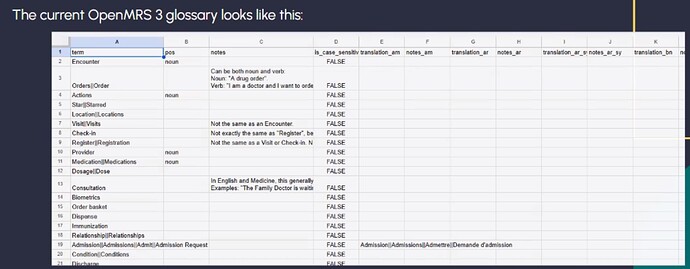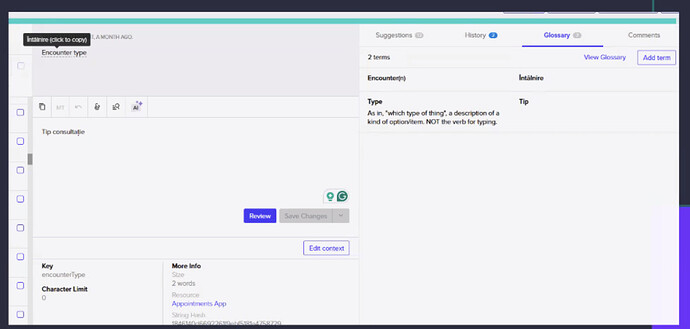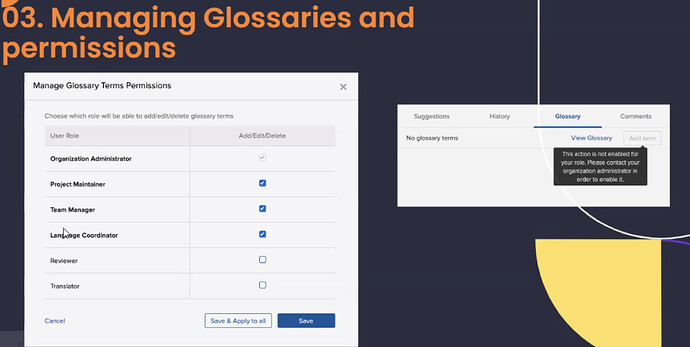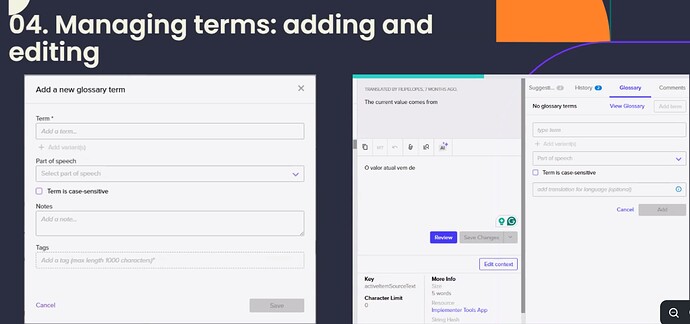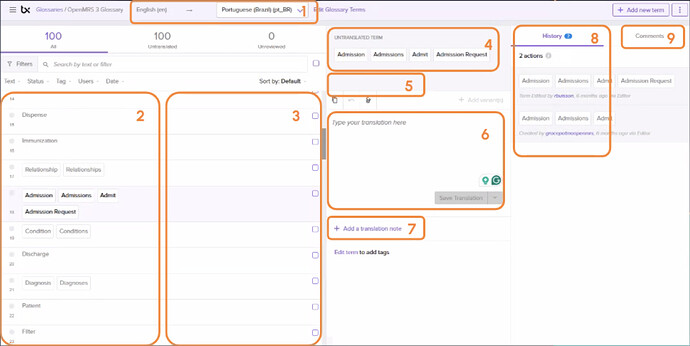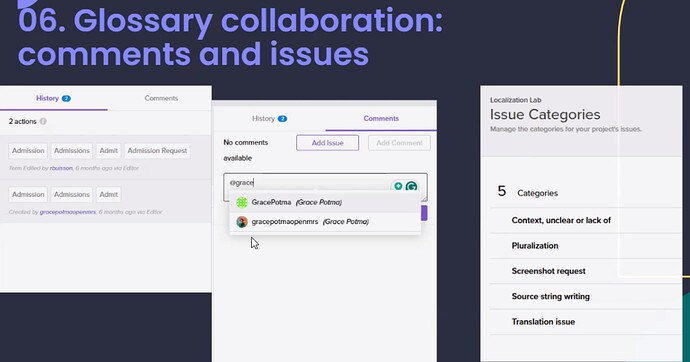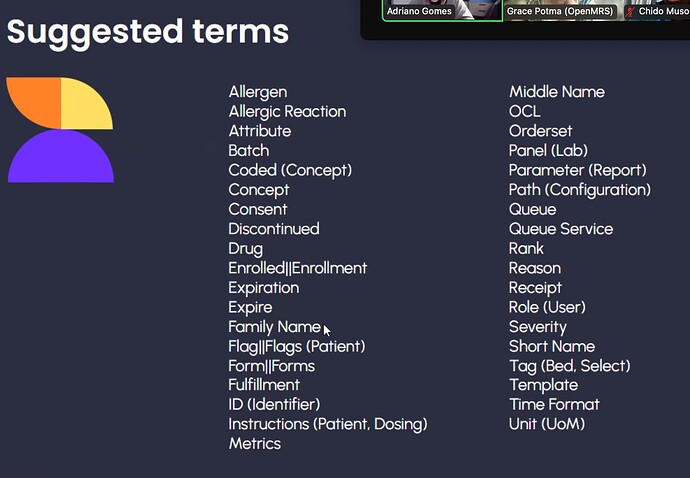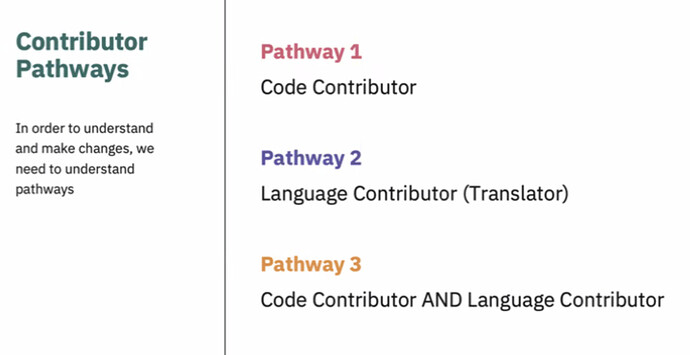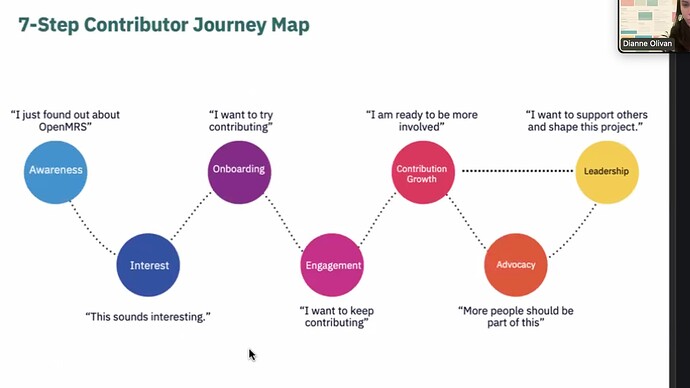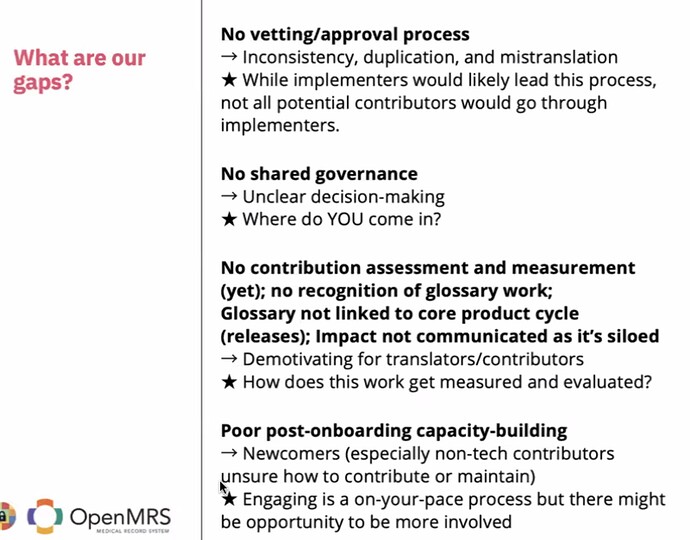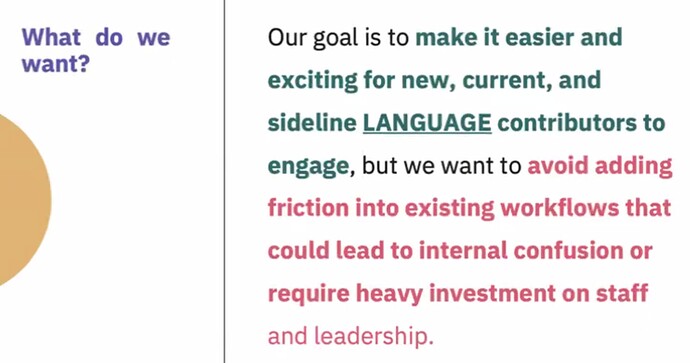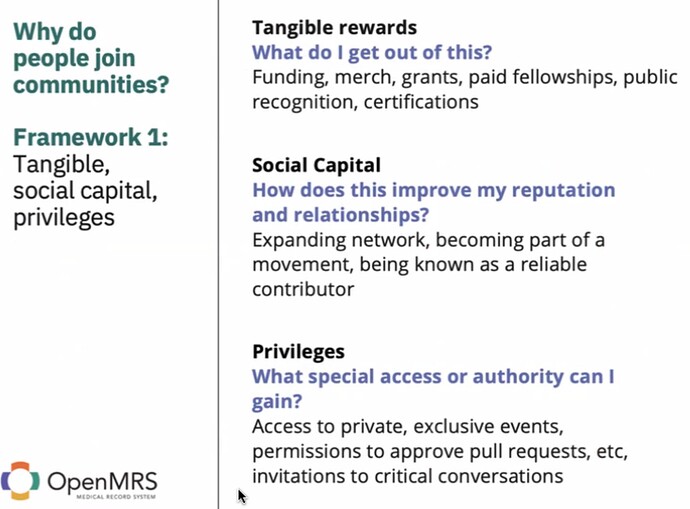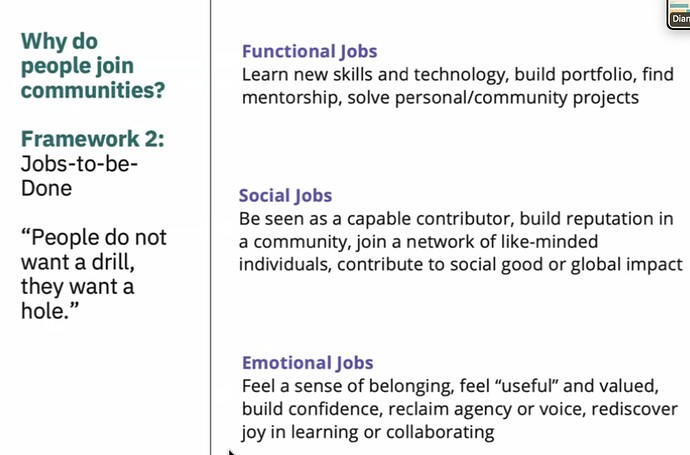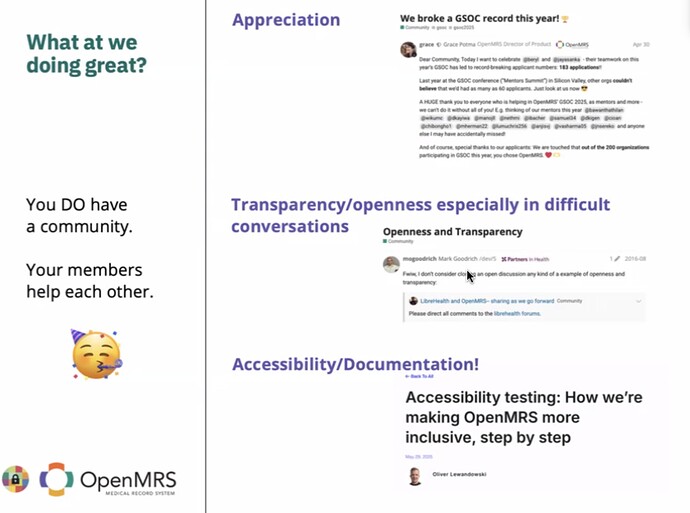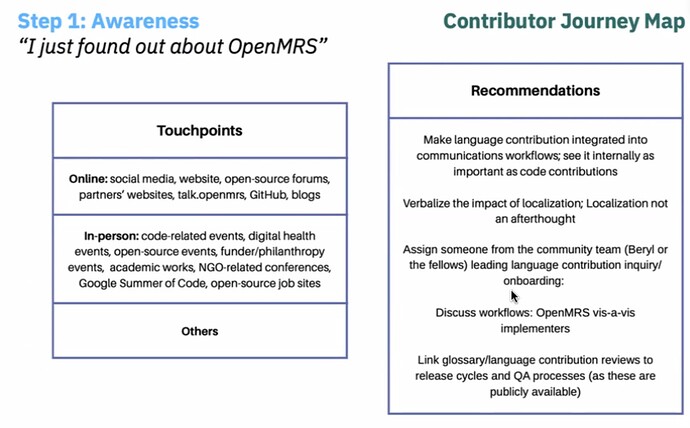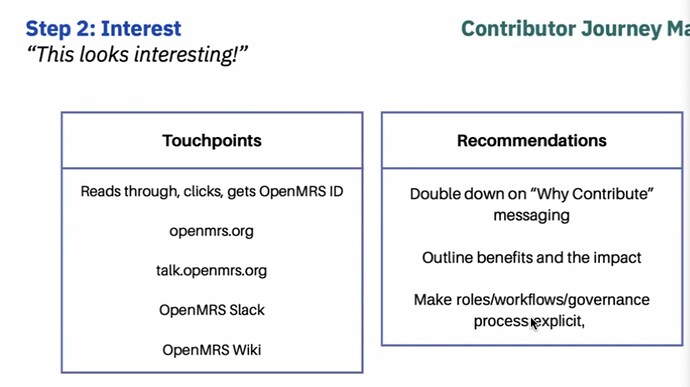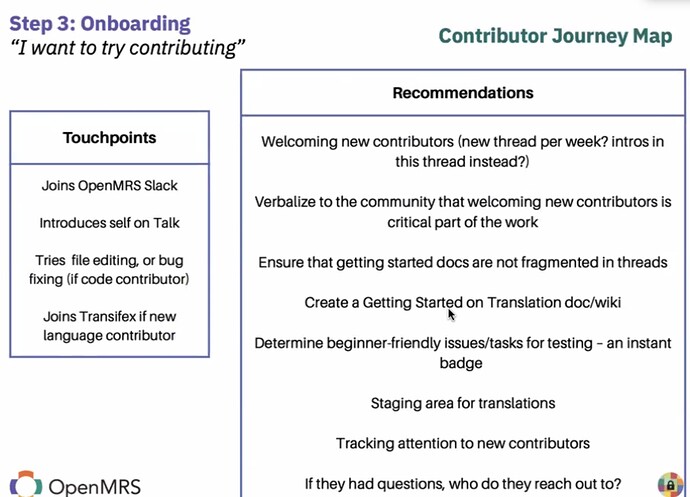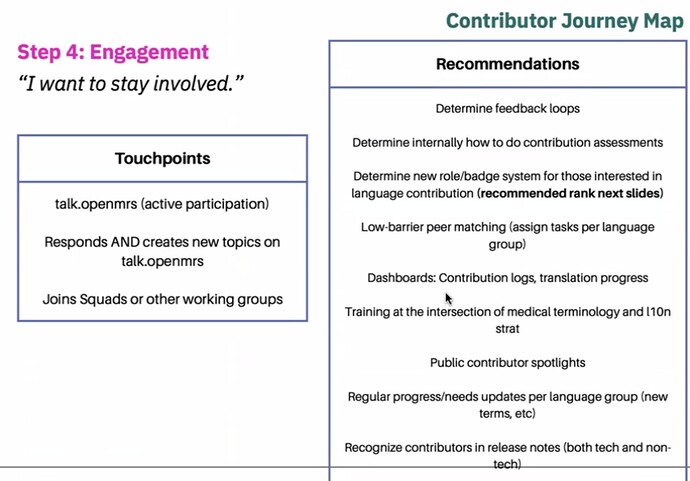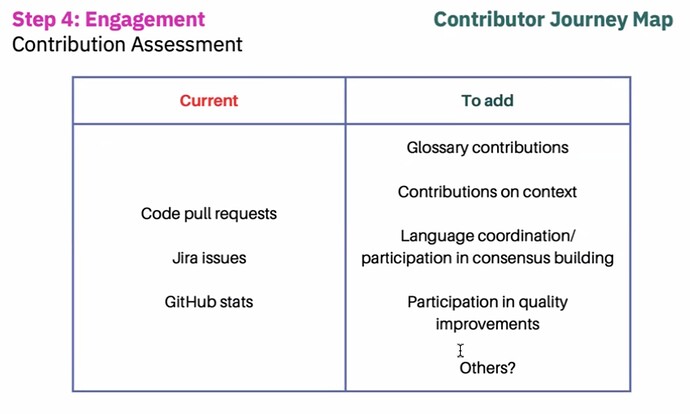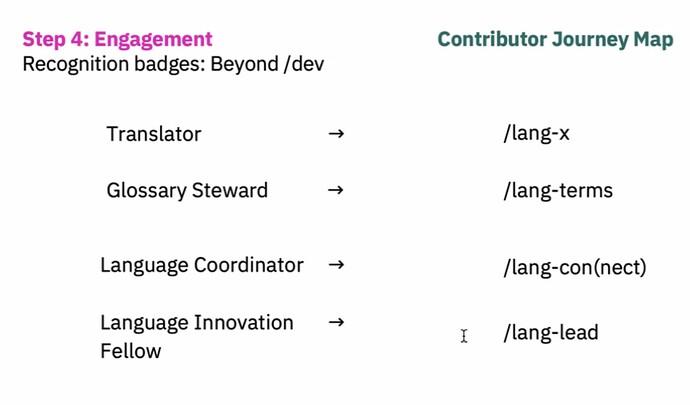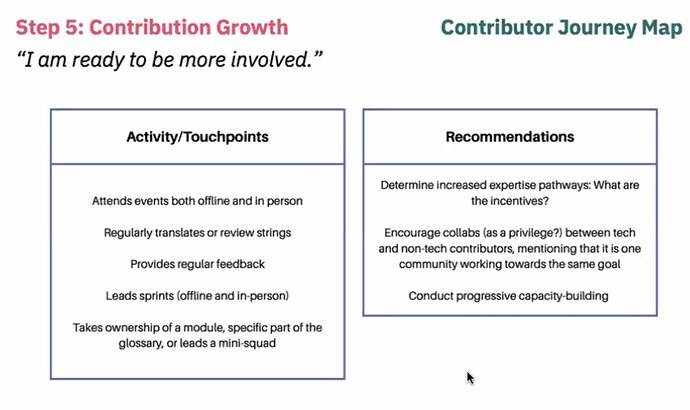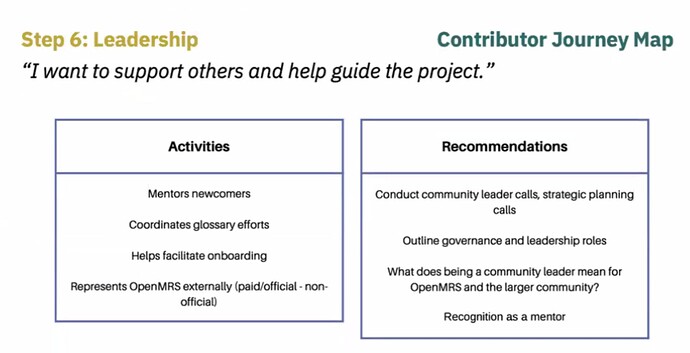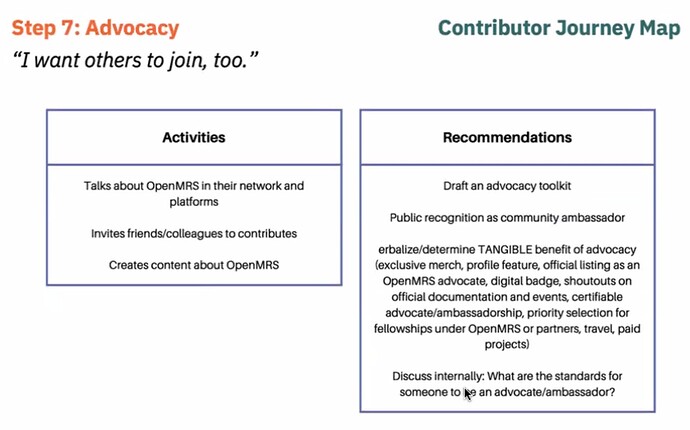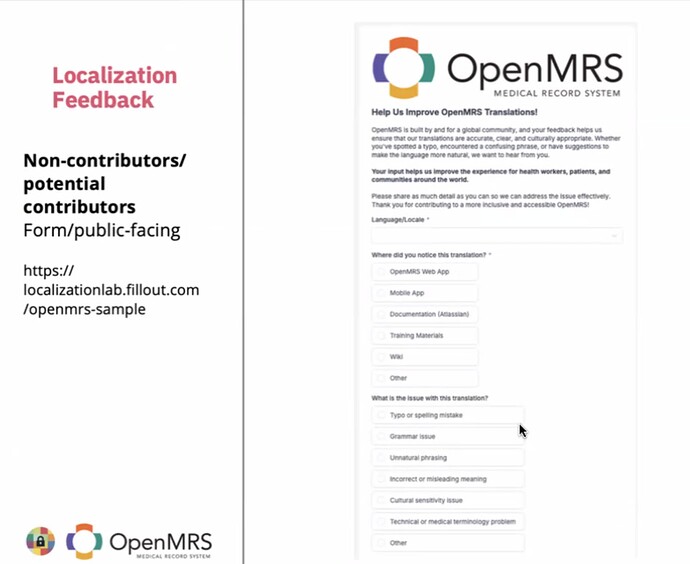Call Notes: July 23: Glossary Sprint training and kick-off
Intro / How to start kick off of a Glossary Sprint:
Focus on specific terms, specific phrases that are important.
Translation Memory: A history of lots of things, like past translations.
Glossary: More than this - differentiates words, comes with definitions with the part of speech. Like how “Order” (as in Lab Order) can be a noun or a verb etc. Glossary helps identify this.
Essential for maintaining consistency especially for industry-specific terminology - like how Drug Order has a particular translation in french in the medical industry, but “order” is different in other industries!
E.g. Order and Orders Noun vs Verb: Should be 2 different entries in the Glossary.
Can select if there’s an error and it will refuse to save, or just a warning.
What it looks like in the editor:
The glossary terms are automatically underlined. Hovering over an underlined term displays the translation. (Or Control+4 to open Glossary)
Spreadsheet easier when starting or adding a lot of new content.
Open Glossary editing to Translators during a glossary sprint; then lock after.
How to “lock”/protect certain words: _______
How to filter for comments or open issues: Log in · Transifex
Start your sprint by focusing on setting up Nouns vs Verbs and clear descriptions about each term. Brainstorming what each word actually means is the hardest, longest part.
Then second part is to work on the actual translations. Which is so much faster with the definitions.
Exercise
More words that could be added:
Not just common words, but also phrases that vary a lot by culture - e.g. Family Name varies a lot by culture/lang.
Most important thing is to always add the definitions; tips on how to differentiate one word from another.
“Even when you are one person doing translation, you want a reminder for what you decided to be the term!”
Good to regularly download the glossary so you have a backup. Especially if you grant permissions to a lot of people.
Think of Translation as a Work in Progress.
Connect with a “senior” translator, and a “new” translator showing great promise.
Call Notes: July 30, Contributor Engagement
Ideally you make translation a full topic instead of a tag. To be on-par with Development contributions.
How to co-create a great translator community & experience?
Verbalize ++ that the language contribution part is important, so you can get more people in.
Increase “Why Contribute”. Benefits for them and Impact.
e.g. gendered language is in a thread!
Make it clear that peoploe can see their work in the dev environment, to see it there and working
Beginner issue to test translation
Announce/celebrate contributors not just on Talk but also on social media and public calls. Because it’s one thing for your own community to recognize you, but it’s another for the community to share it with the world! LinkedIn very popular to communicate pride and gratitude. Esp. students developing their portfolio beneift from this.
Recognize Language contribs in release notes
Progressive cap-building meaning more engaged = more access to more resources.
e.g. LinkedIn banner for “I’m an OpenMRS Ambassador”
Use Transifex comments (for focused words / string feedback); longer conversations can happen in Talk
Dianne Olivan’s community engagement presentation today
- Internal workflow suggestions:
- eg every friday, new contributors role-call “welcome”
- delegation and trust: other cmtys will trust their community leaders, who have strengths. Do landscape networking of who is strong in network - who can you ask to lead some calls, to lead some documentation…? depending on skills. Take stock of who your members are - otherwise it’s difficult to scale in a way that’s intentional.
- Emphasis on WELCOMING - what are all the ways that we could welcome people? We want to encourage emojis, comments to the welcome thread. Streamline how we welcome people.
- Emphasis on PIPELINES/FLOWS - who do I talk to, pair with buddy, talk to X person for what thing, very clear where ppl can ask questions. Hierarchy of who’s in charge that I should go to.
- Emphasis on RECOGNITION - foreground in narrative of product that localization is important; celebrate release of OpenMRS in French/Arabic/whatever in the same way you celebrate the release of the code - this communicates the value in a way we haven’t historically.
- Ideally reduce the amount of platforms you have people on.
- Have a documented process of who X is, where he’s from, language he’s using, …
- Digital Award / badges good? Examples of working?
Example Feedback Form:
screencapture-localizationlab-fillout-openmrs-sample-2025-07-30-09_48_39.pdf (1.2 MB)
Other Advice for Us:
-
How to track contributors - reporting tools? They’ll get back to us.
-
Universities: You have deep networks in universities - connecting to the linguists and diplomats in training there could be one pathway.
-
Recruitment is different depending on the country/culture - how you’re recruit in one country, may not be right in another country.
-
Talk to team at 3D Slicer (bioimaging OSS tool in same CZI EOSS cohort) - just got a grant to localize their tool in Africa and LatAm. Started African part already; way they spun out doing their localization could be an interesting model for us to learn from - Rayya to connect us. https://www.slicer.org/
-
Let people run: Don’t try to make everything in english translated in community - if you have a critical mass of a group of people using a given language, a chapter of contributors who are self-sufficient, let them run in their own language.
-
Next grant opportunity, focus on a given language. Consider paying members as well. Don’t overlook your community as your workforce! Don’t just think you have to rely on professional translation firms. Invest in your community’s capacity. One language group at a time.
We need to get feedback on both community docs and especially technical docs. Both Chido and Adri looking for feedback.

